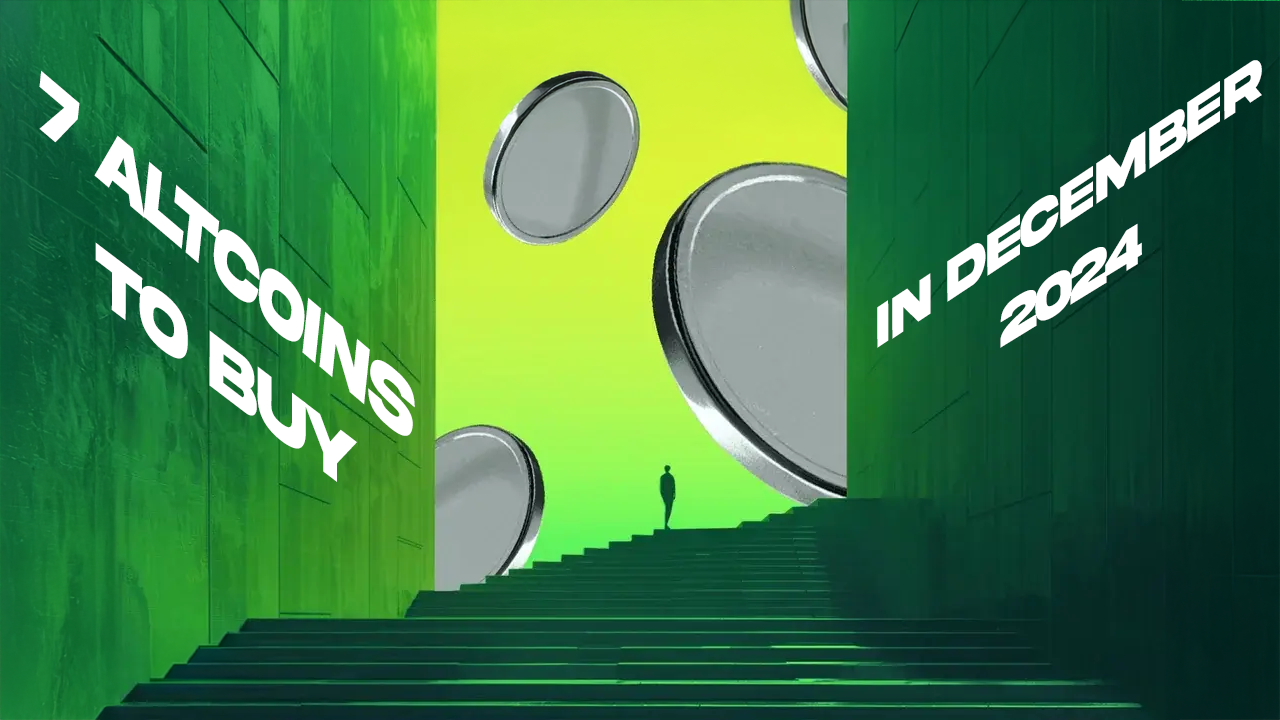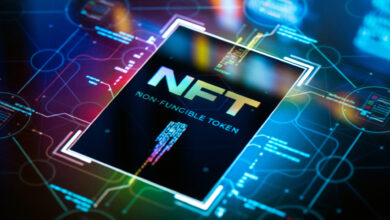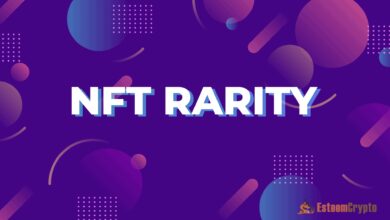How NFT Marketplace Works Complete Guide 2025
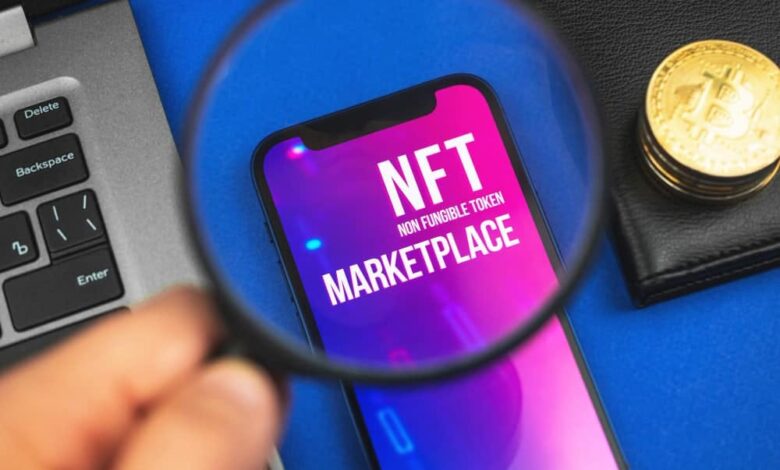
The digital revolution has brought forth numerous innovations, but few have captured global attention like Non-Fungible Tokens (NFTs) and their accompanying marketplaces. How NFT marketplace works has become essential for artists, collectors, investors, and technology enthusiasts navigating this rapidly evolving digital landscape.
NFT marketplaces serve as digital platforms where creators can mint, showcase, and sell their unique digital assets, while collectors and investors can discover, purchase, and trade these one-of-a-kind tokens. Unlike traditional e-commerce platforms, NFT marketplace works through blockchain technology, ensuring authenticity, ownership verification, and seamless transactions of digital collectibles.
The significance of how NFT marketplace works extends beyond mere curiosity. These platforms have revolutionized how we perceive digital ownership, creating new revenue streams for artists, establishing novel investment opportunities, and fundamentally changing the way digital content is valued and exchanged. From multi-million dollar art sales to gaming assets and virtual real estate, NFT marketplaces have become the cornerstone of the digital economy.
This comprehensive guide will explore the intricate mechanisms behind NFT marketplace works, examining everything from the underlying blockchain technology to user experience, transaction processes, and future developments. Whether you’re a creator looking to monetize digital art or an investor seeking to understand this emerging market, this article provides the essential knowledge needed to navigate the NFT marketplace ecosystem successfully.
What is an NFT Marketplace
An NFT marketplace is a specialized digital platform that facilitates the creation, buying, selling, and trading of Non-Fungible Tokens. These platforms function as the primary infrastructure where NFT marketplace works by connecting creators with collectors in a decentralized environment built on blockchain technology.
NFT marketplaces differ significantly from traditional e-commerce platforms. While conventional marketplaces deal with physical or digital products that can be replicated, NFT marketplace works exclusively with unique, verifiable digital assets. Each NFT represents a distinct piece of digital content with proven ownership and authenticity recorded on the blockchain.
The core functionality of how NFT marketplace works revolves around several key components. First, these platforms provide tools for minting NFTs, allowing creators to transform their digital creations into blockchain-based tokens. Second, they offer discovery mechanisms where users can browse, search, and filter through thousands of digital assets. Third, NFT marketplaces facilitate secure transactions using cryptocurrency payments and smart contracts.
Popular NFT marketplaces include OpenSea, Rarible, SuperRare, and Foundation, each offering unique features and catering to different segments of the NFT community. How NFT marketplace works across these different platforms reveals common patterns while highlighting specialized functionalities that set each marketplace apart in the competitive landscape.
Core Components of NFT Marketplaces
Blockchain Infrastructure
The foundation of how NFT marketplace works lies in robust blockchain infrastructure. Most NFT marketplaces operate on Ethereum, though alternatives like Polygon, Solana, and Binance Smart Chain are gaining popularity. The blockchain serves as the immutable ledger that records all NFT ownership transfers, ensuring transparency and preventing fraud.
Smart contracts form the backbone of NFT marketplace works functionality. These self-executing contracts automatically handle transaction logic, royalty distributions, and ownership transfers without requiring intermediaries. When how NFT marketplace works, it’s crucial to recognize that smart contracts eliminate the need for traditional payment processors and legal frameworks.
User Interface and Experience
The user interface is where NFT marketplace works becomes accessible to everyday users. Modern NFT marketplaces prioritize intuitive design, making it easy for both creators and collectors to navigate complex blockchain interactions. The interface typically includes wallet integration, NFT browsing capabilities, creation tools, and transaction management features.
NFT marketplace works through seamless wallet connectivity, allowing users to connect their digital wallets like MetaMask, Coinbase Wallet, or WalletConnect. This integration enables users to view their NFT collections, manage transactions, and interact with smart contracts directly from the marketplace interface.
Search and Discovery Features
Effective search and discovery mechanisms are essential for how NFT marketplace works successfully. These platforms implement sophisticated filtering systems that allow users to search by category, price range, blockchain, creator, and various metadata attributes. Advanced NFT marketplaces utilize AI-powered recommendation engines to suggest relevant content based on user behavior and preferences.
The NFT Creation Process (Minting)
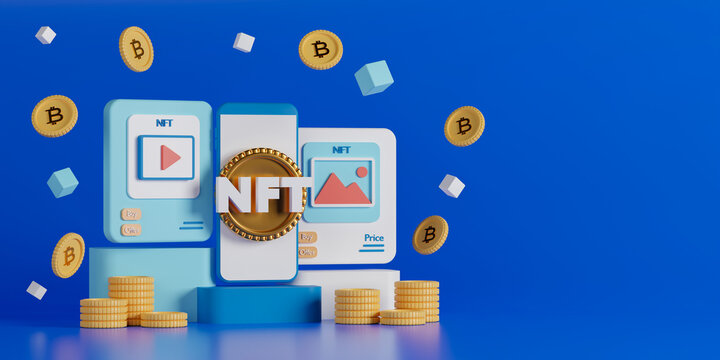
How NFT marketplace works requires a deep dive into the minting process. Minting is the procedure through which digital content becomes a verifiable NFT on the blockchain. This process is fundamental to NFT marketplace works as it creates the unique tokens that form the platform’s inventory.
The minting process begins when creators upload their digital files to the NFT marketplace. These files can include images, videos, audio files, 3D models, or any other digital content. The platform then generates metadata describing the NFT’s properties, including title, description, traits, and rarity attributes that influence its value in the marketplace.
NFT marketplace works by implementing lazy minting or immediate minting strategies. Lazy minting allows creators to list NFTs without paying upfront gas fees, with the actual blockchain transaction occurring only when someone purchases the item. This approach makes NFT marketplaces more accessible to creators who might otherwise be deterred by high transaction costs.
During the minting process, creators can set various parameters that affect how NFT marketplace works for their specific tokens. These include royalty percentages for secondary sales, unlock conditions for special content, and whether the NFT will be sold through auctions or fixed-price listings. These options is crucial for creators looking to maximize their success on NFT marketplaces.
Buying and Selling Mechanisms
The transaction mechanisms represent the core of how NFT marketplace works from a user perspective. NFT marketplaces typically offer multiple purchasing options, including fixed-price sales, auction-based sales, and offer systems that allow flexible negotiation between buyers and sellers.
Fixed-price sales are the simplest form of NFT marketplace works transactions. Sellers list their NFTs at predetermined prices, and buyers can purchase immediately by paying the listed amount plus applicable gas fees. This straightforward approach makes NFT marketplaces accessible to users who prefer predictable transaction processes.
Auction mechanisms add complexity and excitement to how NFT marketplace works. Timed auctions create urgency and can drive prices higher than fixed-price sales. English auctions allow bidding wars, while Dutch auctions start high and decrease over time until someone accepts the price. These varied approaches ensure NFT marketplace works for different selling strategies and buyer preferences.
The offer system enables negotiation within NFT marketplaces, allowing potential buyers to submit offers below the listed price. Sellers can accept, decline, or counter these offers, creating a dynamic marketplace environment. This flexibility is essential to how NFT marketplace works in accommodating diverse market conditions and user preferences.
Smart Contracts and Blockchain Technology
Smart contracts are the technological foundation that makes NFT marketplace works possible without traditional intermediaries. These programmable contracts automatically execute transactions when predetermined conditions are met, ensuring trustless interactions between parties who may never meet in person.
How NFT marketplace works requires grasping the role of blockchain technology in ensuring security, transparency, and immutability. Every transaction on NFT marketplaces is recorded on the blockchain, creating a permanent and verifiable history of ownership transfers. This transparency is crucial for establishing provenance and authenticity in the digital art world.
Gas fees are an important aspect of how NFT marketplace works on Ethereum-based platforms. These fees compensate network validators for processing transactions and can vary significantly based on network congestion. Many NFT marketplaces are exploring layer-2 solutions and alternative blockchains to reduce transaction costs while maintaining security.
Interoperability is becoming increasingly important as NFT marketplace works evolve. NFTs minted on one platform should ideally be transferable and displayable across different marketplaces and applications. This cross-platform compatibility ensures that NFT marketplaces contribute to a broader, interconnected ecosystem rather than isolated silos.
Payment Systems and Cryptocurrency Integration
Payment systems are fundamental to how NFT marketplace works, as these platforms primarily operate using cryptocurrency transactions. Most NFT marketplaces accept Ethereum (ETH) as the primary payment method, though many are expanding to include other cryptocurrencies like Bitcoin, Solana, and stablecoins.
Cryptocurrency integration in NFT marketplace works through wallet connections that allow users to authorize transactions directly from their personal wallets. This integration eliminates the need for traditional payment processors, reducing fees and increasing transaction speed while maintaining user control over their funds.
Some NFT marketplaces are introducing fiat currency integration to make platforms more accessible to mainstream users. These implementations typically involve third-party payment processors that convert traditional currency to cryptocurrency behind the scenes, simplifying how NFT marketplace works for users unfamiliar with crypto transactions.
Stablecoins are playing an increasingly important role in NFT marketplace works by providing price stability and reducing volatility concerns. Marketplaces accepting USDC, USDT, or DAI offer users the ability to transact without worrying about cryptocurrency price fluctuations during the purchasing process.
Security and Authentication
Security is paramount in How NFT marketplace works safely and reliably. NFT marketplaces implement multiple layers of security, including blockchain-based verification, wallet authentication, and platform-specific security measures to protect users from fraud and theft.
Authentication mechanisms ensure that only legitimate wallet owners can interact with their NFTs on NFT marketplaces. Digital signatures verify every transaction, making it virtually impossible for unauthorized parties to transfer or sell NFTs without proper wallet access. This cryptographic security is essential to how NFT marketplace works trustlessly.
Verification systems help users identify authentic creators and high-quality projects within NFT marketplaces. Many platforms implement creator verification badges, similar to social media verification, to help collectors identify legitimate artists and avoid counterfeit works. These verification systems is crucial when learning how NFT marketplace works safely.
Scam prevention is an ongoing challenge that NFT marketplaces address through various measures. These include automated detection systems for suspicious activity, educational resources about common scams, and community reporting mechanisms. Users must understand these security aspects when exploring how NFT marketplace works to protect their investments.
Marketplace Fees and Revenue Models
How NFT marketplace works financially requires examining the fee structures that sustain these platforms. NFT marketplaces typically generate revenue through transaction fees, listing fees, and premium services, creating sustainable business models while providing valuable services to users.
Transaction fees are the most common revenue source for NFT marketplaces, typically ranging from 2.5% to 10% of the sale price. These fees cover platform maintenance, development costs, and profit margins. These fees is essential when calculating the true cost of how NFT marketplace works for both buyers and sellers.
Royalty systems represent a revolutionary aspect of NFT marketplace works, allowing creators to earn ongoing revenue from secondary sales. Most NFT marketplaces automatically enforce creator royalties, typically ranging from 5% to 15% of each resale transaction. This perpetual income stream incentivizes high-quality creation and long-term platform engagement.
Premium services and subscription models are emerging as additional revenue streams for NFT marketplaces. These might include advanced analytics, priority listing placement, reduced fees, or exclusive access to high-profile drops. These options helps users optimize how NFT marketplace works for their specific needs and budgets.
Popular NFT Marketplace Platforms
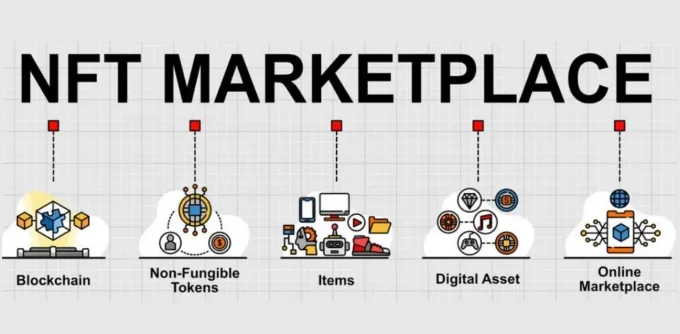
OpenSea remains the largest and most well-known example of how NFT marketplace works at scale. Supporting multiple blockchains and offering comprehensive features for creators and collectors, OpenSea demonstrates the full potential of NFT marketplace works in a mature platform environment.
Rarible showcases how NFT marketplace works with community governance integration. This platform allows token holders to participate in platform decisions, creating a decentralized approach to marketplace evolution. Rarible’s governance model represents an innovative approach to NFT marketplace works democratically.
SuperRare focuses on curated digital art, demonstrating how NFT marketplace works in a premium, quality-focused environment. By carefully selecting artists and maintaining high standards, SuperRare creates exclusivity and higher average sale prices, showing alternative approaches to NFT marketplace works.
Foundation emphasizes creator empowerment and social features, illustrating how NFT marketplace works with strong community elements. The platform’s invitation-based system and social discovery features create a unique environment that differs from other NFT marketplaces.
Future Trends and Developments
The evolution of how NFT marketplace works continues rapidly, with several emerging trends shaping the future landscape. Cross-chain compatibility is becoming increasingly important, allowing NFTs to move seamlessly between different blockchain networks and expanding the potential user base for NFT marketplaces.
Virtual and Augmented Reality integration represents the next frontier for NFT marketplace works. As VR and AR technologies mature, NFT marketplaces are beginning to incorporate immersive experiences that allow users to view and interact with digital assets in three-dimensional spaces.
Artificial Intelligence integration is transforming how NFT marketplace works through improved search capabilities, automated content moderation, and personalized recommendations. AI-powered tools are making NFT marketplaces more user-friendly and efficient while helping users discover relevant content more effectively.
Sustainability initiatives are becoming crucial as NFT marketplaces address environmental concerns associated with blockchain technology. Many platforms are transitioning to more energy-efficient blockchains or implementing carbon offset programs, ensuring NFT marketplace works responsibly in an environmentally conscious world.
Also Read: What are NFTs and why are some worth millions
Conclusion
Understanding how NFT marketplace works reveals a complex ecosystem that combines cutting-edge blockchain technology with user-friendly interfaces to create entirely new markets for digital assets. These platforms have revolutionized digital ownership, created new revenue streams for creators, and established novel investment opportunities that continue to evolve rapidly.
The mechanics behind NFT marketplace works involve sophisticated smart contracts, secure payment systems, and robust blockchain infrastructure that ensures authenticity and transparency. From the initial minting process to final sales transactions, every aspect of how NFT marketplace works is designed to provide security, efficiency, and accessibility for users worldwide.
As the NFT marketplace ecosystem continues to mature, we can expect further innovations in user experience, cross-chain compatibility, and integration with emerging technologies. The future of how will likely include more sophisticated discovery mechanisms, enhanced virtual experiences, and improved sustainability measures that address current environmental concerns.
For creators, collectors, and investors looking to participate in this digital revolution, how is essential for success. These platforms represent more than just transaction venues; they’re the foundation of a new digital economy where creativity, technology, and commerce converge to create unprecedented opportunities for value creation and exchange.
The journey of marketplaces is just beginning, and staying informed about how will be crucial for anyone looking to participate in this transformative sector of the digital economy.

